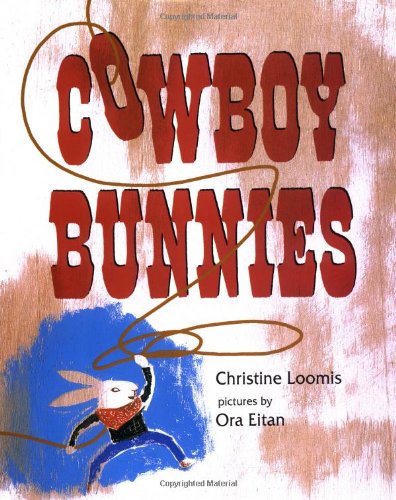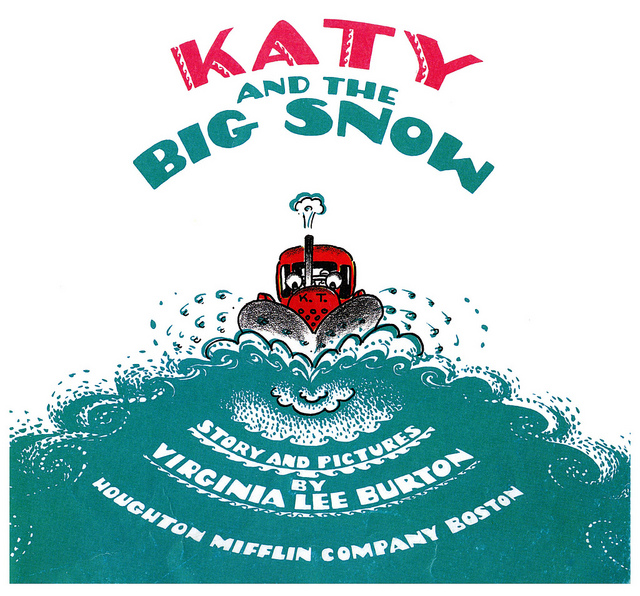
Cowboy bunnies
Wake up early
Ride their ponies
Hurly Burly.
It’s a rhyming children’s book about the life of a cowboy (bunny). They “Start at sunup, work all day roping cows, tossing hay.” And each action gets a colorful woodprint drawing – of cows, horses, and the bandana-wearing bunnies. The drawings are eye-catching, filled with bold primary colors, and the simplified shapes just make them that much more intriguing for a child, especially a very young one. You can imagine them thinking, What’s the brown? It’s a bunny! What’s the yellow? Hay!
Mending fences
on the ridges
Jumping gullies
Fixing bridges
The words are fun and enthusiastic – and of course, they rhyme. But within two pages, the bunnies are eating lunch – steaks and jellies head for their bellies.
It’s not just the illustrations that are simple and abstract. The book scatters them across the pages – rows of tall drawings, on a white background with smears of brown. The text skips around to different parts of the pages.
The bunnies don’t have names – but they have a lot of fun. At the watering hole, they “Chase each other, sit and doze, roll their pants up, dip their toes.” My favorite drawing shows the bunnies riding up a hill. There’s orange clouds in the sky, and a brown trail through a yellow field. But if you look closely, the enormous bunnies are actually riding hobby horses up the hill. Wait a minute – are they real cowboys? Or are these bunnies just playing around? Everything seems real enough, so I don’t think the author is sending
a hidden message about the power of imagination. If anything, it’s a testament to her own imagination. The bunnies are cowboys – they just are – and they’ve also turned hobby horses magically into real horses.
Cowboy bunnies
big and little
pick a banjo
play a fiddle.
One of the bunnies sings, with his eyes closed proudly and a wide-open mouth. There’s a cross-hatch pattern on his red shirt, and he’s holding a banjo, squatting in a cowboy stance. But there’s seven different pictures on the two-page spread, showing the other bunnies playing the fife, the clarinet, and even a saxophone. Go, bunnies, go!
Sing a lonesome
Cowboy tune
Underneath a
Silver moon.
The nighttime photos are the most impressive. The sleepy-eyed bunnies are seeing the world in strange colors. The bunnies are lavendar and blue, and their horses are purple, white, and even splotched with red.
Stay up late
Rub their eyes
Home they go
With sleepy sighs.
